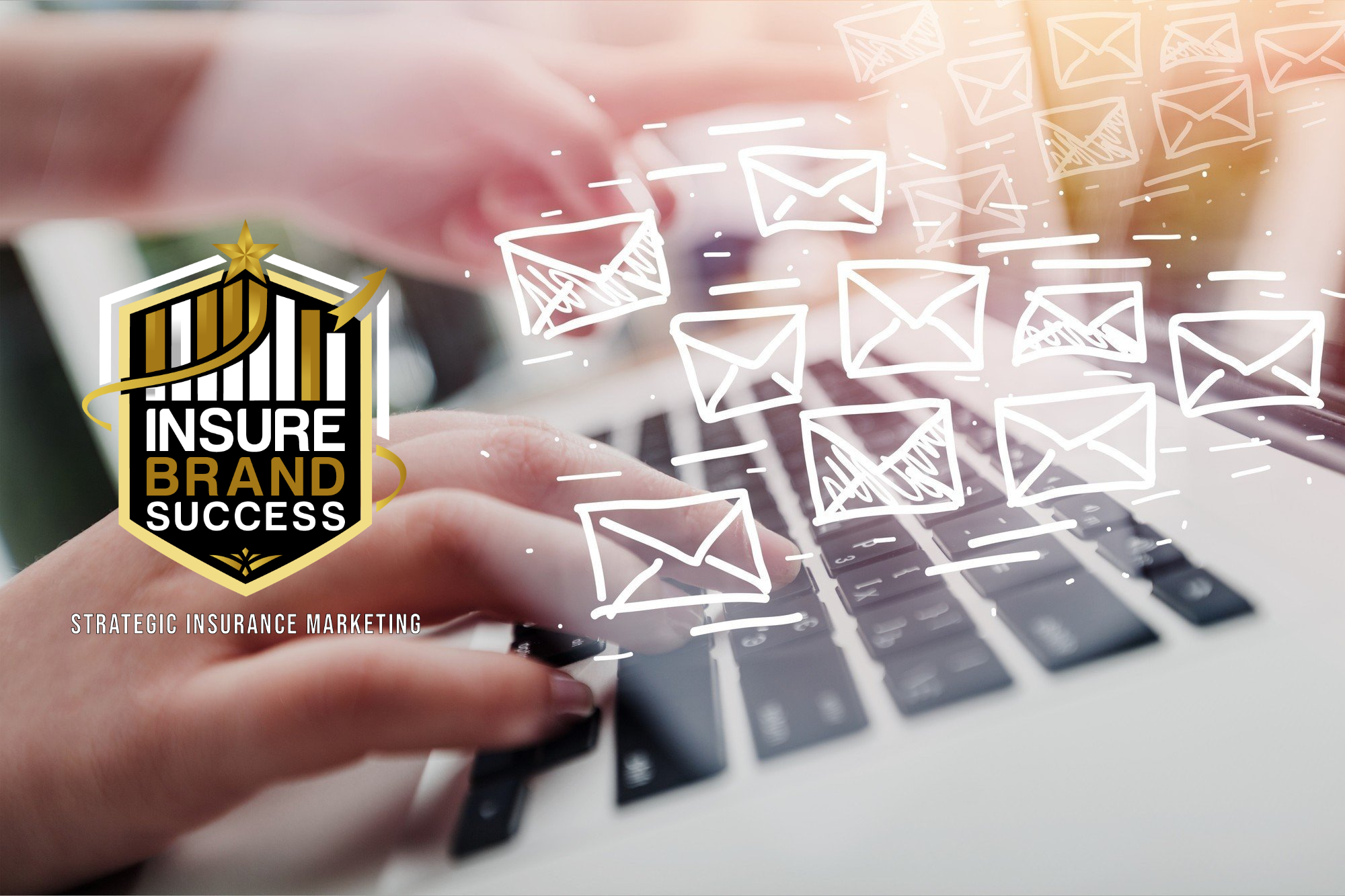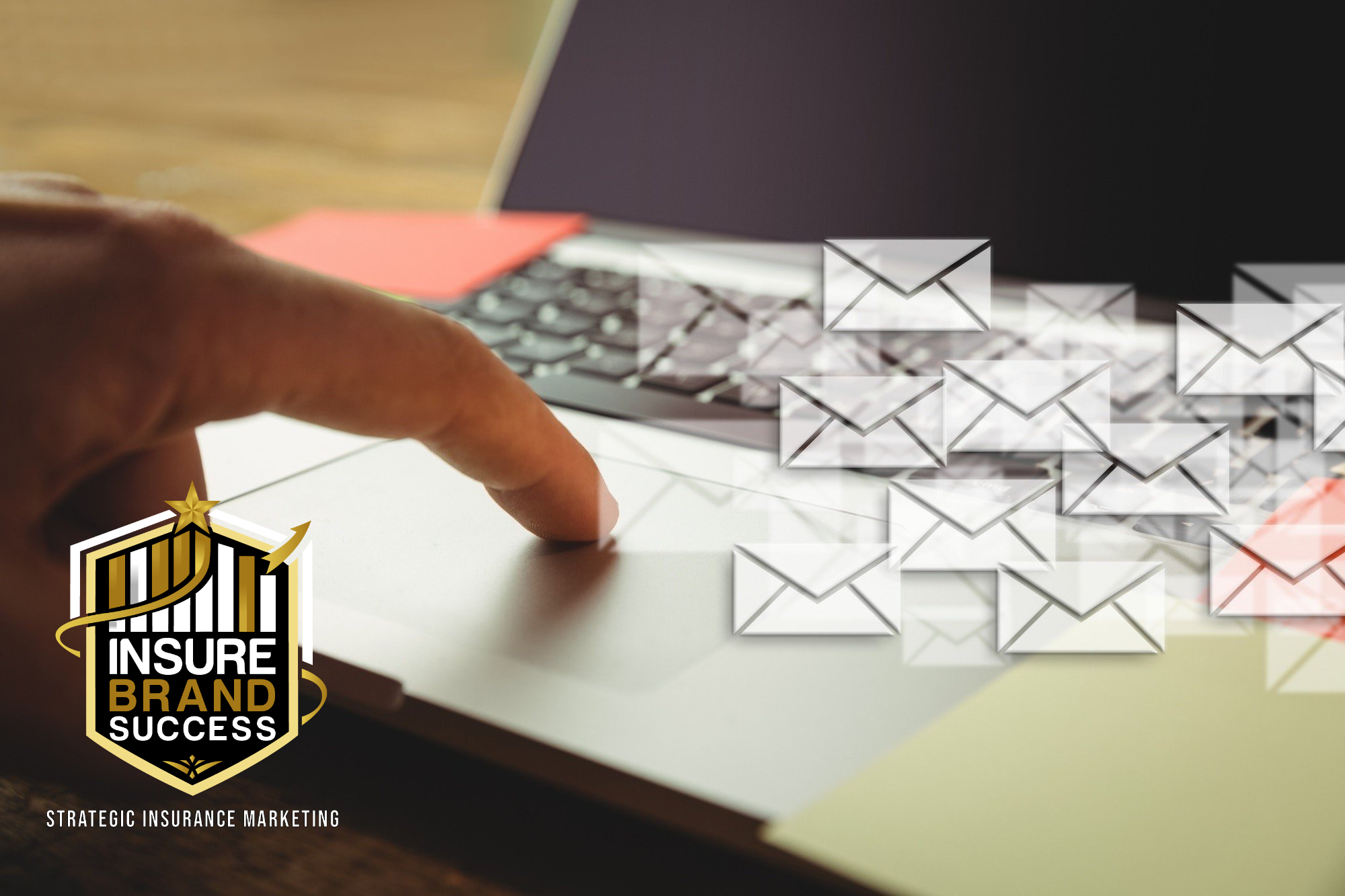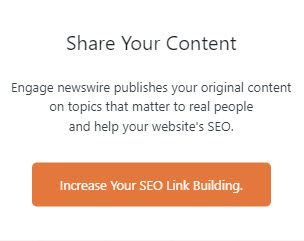Why Email Marketing Remains a Game-Changer for Insurance Agencies
In an age where digital advertising channels evolve almost monthly, email marketing remains one of the most powerful tools for insurance agencies. While platforms like social media, paid search, and influencer campaigns often steal the spotlight, email continues to quietly outperform them in both consistency and profitability. In fact, despite the rise of social media, automation, and artificial intelligence, email continues to deliver unmatched return on investment (ROI)often exceeding $36 for every $1 spent, according to industry benchmarks. That level of efficiency makes email marketing not just relevant, but essential for insurance professionals seeking measurable, sustainable growth.
For insurance agencies, where trust, timing, and relationships drive sales, email marketing offers the perfect balance of personalization and scalability. Unlike one-size-fits-all advertising, email enables agencies to segment their audiences by policy type, renewal date, or customer lifecycle stage ensuring every message feels timely, relevant, and valuable. A well-crafted campaign can educate policyholders about coverage options, provide updates on regulatory changes, or deliver reminders that help clients stay protected year-round. This kind of proactive communication positions the agency as a reliable partner rather than a distant provider.
Moreover, email marketing gives agencies the ability to nurture leads through every phase of the buyer’s journey. From the first quote request to policy renewal, every email can strengthen the client relationship. Automated workflows make it easier to stay in touch without overwhelming the team, while dynamic personalization ensures each subscriber feels seen and understood. When executed correctly, these campaigns become an extension of the agency’s customer service reinforcing credibility, trust, and long-term loyalty.
Companies like Insure Brand Success have taken this approach further by developing specialized insurance email marketing strategies designed specifically for brokers, agencies, and carriers. Their data-driven frameworks focus on audience segmentation, lifecycle automation, and compliance-friendly content that resonates with modern consumers. These insurance email marketing strategies transform email from a transactional communication tool into a relationship-building engine that consistently drives new business and improves client retention rates.
For instance, automated renewal reminders paired with personalized coverage suggestions can significantly reduce client churn, while educational newsletters help build authority and encourage cross-selling opportunities. By blending strategic storytelling with smart automation, Insure Brand Success empowers insurance agencies to move beyond one-off campaigns and embrace a holistic communication strategy that delivers results month after month.
Ultimately, email marketing remains a game-changer for insurance agencies because it bridges technology with humanity. It allows agencies to communicate at scale without losing the personal touch clients expect from a trusted advisor. As the insurance landscape grows increasingly competitive, the ability to deliver consistent, personalized, and data-backed communication directly to a client’s inbox is not just an advantage, it’s a necessity for long-term success.
Understanding the Role of Email in Modern Insurance Marketing
Insurance is a relationship-driven business. Every client interaction from new policy inquiries to renewals and upsells represents an opportunity to build trust and deliver value. In this context, email marketing has become one of the most strategic communication channels available to agencies today. It allows insurance professionals to engage clients in meaningful ways, delivering well-timed, well-crafted communication that speaks directly to their needs and circumstances. Whether it’s a policy update, a renewal reminder, or an educational piece on coverage options, email ensures the message arrives at the right moment.
More importantly, email marketing amplifies this engagement by ensuring consistent, personalized touchpoints. Unlike generic campaigns that speak to broad audiences, email enables precise segmentation by location, policy type, client behavior, or renewal date allowing each message to feel uniquely relevant. This approach builds trust and keeps agencies top-of-mind, especially during high-stakes decisions like renewals or coverage changes. Personalized subject lines, dynamic content, and triggered workflows can further enhance open rates and conversions, turning every message into a meaningful client interaction.
When combined with broader digital marketing for insurance agencies, email campaigns take on an even more powerful role. They serve as connective tissue between advertising, social media engagement, and lead nurturing efforts creating a cohesive brand experience across multiple channels. A targeted Facebook ad may generate interest, but a follow-up email can close the loop by delivering quotes, testimonials, or educational content that reinforces credibility. This integrated approach enhances lead nurturing, strengthens brand loyalty, and boosts referral activity, making email a cornerstone of any well-rounded insurance marketing strategy.
Unlike paid ads that stop the moment a budget runs out, a robust email list becomes a long-term asset one that compounds in value over time. Each new subscriber represents not just a potential sale but an ongoing relationship that can yield multiple policies, renewals, and referrals. A well-maintained email database gives agencies ownership over their audience, insulating them from the volatility of algorithm changes or rising ad costs. In other words, email marketing isn’t rented attention, it’s earned trust that grows stronger with every campaign.
The Small Business Administration (SBA) (sba.gov) underscores email’s role in customer retention, citing that regular communication can increase client lifetime value by as much as 30%. For insurance agencies, where renewals and cross-selling are key revenue drivers, these gains are especially impactful. Maintaining contact through personalized email campaigns ensures that policyholders feel informed, supported, and valued qualities that directly influence loyalty and advocacy.
Consider a simple yet powerful sequence: a “welcome” email series for new clients that introduces agency services, followed by quarterly newsletters with coverage tips, and annual renewal reminders paired with cross-sell opportunities. Over time, this rhythm of communication doesn’t just inform it builds a relationship. Clients are more likely to trust an agency that educates and communicates regularly than one that only reaches out when payment is due.
Ultimately, understanding the role of email in modern insurance marketing comes down to recognizing its dual purpose: automation with a personal touch. It provides the scalability needed to reach thousands of clients, while still maintaining the authenticity that fuels long-term relationships. As the industry continues to evolve with new technologies and customer expectations, email remains a proven, adaptable, and cost-effective channel that connects human expertise with digital precision making it indispensable for insurance agencies seeking sustainable growth.

Building a Strong Foundation: The Email List
A successful email marketing strategy for insurance agencies starts with a high-quality, well-structured email list. Without a solid foundation, even the most creative campaign will struggle to deliver results. The strength of your list determines not only how many people you reach but also how effectively you communicate value and build lasting client relationships.
1. Segmenting Your Audience for Relevance
Successful insurance email campaigns begin with a segmented, clean database. Segmentation ensures that every subscriber receives content tailored to their needs whether they’re small business owners shopping for liability coverage or individuals comparing auto insurance quotes. Rather than sending one-size-fits-all messages, segmentation allows agencies to deliver personalized experiences that increase engagement and drive results.
Effective segmentation can include:
- Policy type: Auto, life, home, commercial, etc. By categorizing clients based on their coverage interests, agencies can send content that directly aligns with their goals such as safety tips for auto insurance or renewal reminders for commercial liability policies.
- Customer status: Prospects, active policyholders, renewals, or lapsed clients. Each stage of the customer journey demands different messaging; for example, renewal clients may appreciate loyalty discounts, while new leads need educational guidance and trust-building communication.
- Location: Helps personalize communication around state-specific regulations or regional risks. Insurance needs in coastal areas differ from those in the Midwest, and acknowledging those distinctions shows attention to detail and local expertise.
- Engagement level: Sends more educational content to colder leads and conversion-oriented offers to warmer ones. This approach ensures that every subscriber receives messaging suited to their readiness level, avoiding over-communication while maximizing potential conversions.
By refining audience segments, agencies not only increase open and click-through rates but also improve conversion outcomes and compliance accuracy. A segmented database reduces unsubscribe rates, prevents spam complaints, and ensures regulatory adherence to laws like CAN-SPAM and GDPRcritical for agencies that operate across multiple states or serve diverse client bases.
Segmentation also enhances customer satisfaction. When policyholders feel that their insurance provider understands their individual circumstances, they are more likely to remain loyal and recommend the agency to others. Over time, this precision targeting turns basic outreach into a client retention strategy that compounds in value with each campaign.
2. Capturing Leads Through Website and Landing Pages
Your website serves as the foundation for email acquisition. It’s the digital storefront where potential clients decide whether to trust your brand enough to share their contact information. Incorporating forms, quote request pages, and pop-ups optimized for lead capture can make the difference between passive traffic and active subscribers.
To succeed, these elements must be designed with user intent and convenience in mind. Forms should be short, visually clean, and clearly communicate the value of subscribing or requesting a quote such as receiving a free coverage comparison, risk assessment, or exclusive insurance insights. Simple, benefit-driven copy paired with visible security assurances (like SSL badges or data privacy statements) can significantly improve form submissions.
Modern insurance websites designed with conversion in mind such as those created through web design for insurance agencies prioritize user experience, mobile responsiveness, and data protection. A frictionless experience is critical; more than half of insurance consumers now research policies on mobile devices, meaning responsive design directly affects lead generation. Easy navigation, fast loading times, and intuitive form placement encourage visitors to complete the sign-up process.
Equally important is trust and compliance. Insurance is a high-stakes industry where customers share personal and financial data. Reinforcing privacy policies, displaying recognizable certifications, and ensuring transparent consent mechanisms all contribute to higher confidence and stronger conversion rates.
Once visitors submit their information, integrating form submissions directly into an email marketing platform like HubSpot, Mailchimp, or ActiveCampaign enables automation from the moment a visitor converts. This connection triggers immediate responses such as welcome sequences, quote follow-ups, or educational drip campaigns without requiring manual intervention. The result is faster engagement, better lead nurturing, and a smoother transition from interest to conversion.
Beyond basic automation, advanced integrations also allow agencies to track user behavior post-signup. Metrics like page visits, link clicks, and form completions can inform future segmentation, ensuring each subscriber continues to receive content aligned with their interests. Over time, this creates a self-optimizing marketing ecosystem that grows stronger with every interaction.
A strong email list doesn’t just represent a pool of contacts it reflects the agency’s credibility, digital maturity, and commitment to communication excellence. By focusing on segmentation, data integrity, and smart lead capture, insurance agencies can turn their email marketing database into a powerful business asset that fuels long-term growth and retention.
Crafting Compelling Insurance Email Campaigns
Personalization and Value-Based Messaging
Today’s consumers expect more than generic newsletters. They want relevant information that speaks directly to their needs. Personalization goes beyond simply adding the recipient’s name, it’s about aligning content with their specific circumstances.
For instance, a policyholder with auto coverage might appreciate seasonal reminders about vehicle maintenance or local safety tips. Meanwhile, a business insurance client could receive updates about regulatory changes from sources like the National Association of Insurance Commissioners (NAIC).
These personalized, value-rich communications establish the agency as an authority, not just a seller.
Educational, Not Just Promotional, Content
Education is one of the most effective ways to build trust. Insurance customers often have questions about coverage limits, renewal timelines, or claims processes. Email campaigns that provide insights into these areas demonstrate expertise while reducing friction during the sales process.
Educational content might include:
- “Top 5 Mistakes to Avoid When Renewing Your Policy”
- “How to Protect Your Small Business from Liability Risks”
- “Understanding the Difference Between Term and Whole Life Insurance”
These resources not only improve engagement but also align with SEO-friendly topics found in broader insurance marketing strategies.
Automating the Customer Journey
Automation ensures that no opportunity slips through the cracks. By setting up behavior-based workflows, agencies can automatically send relevant follow-ups, renewal reminders, and cross-sell offers.
For example:
- Welcome sequences after a quote request.
- Renewal reminders 30 days before a policy expires.
- Cross-sell campaigns introducing new coverage options.
Tools like insurance email marketing software make automation easy while maintaining compliance with anti-spam and data privacy laws.
Designing Emails That Convert
Crafting Effective Subject Lines
Your subject line determines whether your email gets opened or ignored. High-performing insurance campaigns use short, specific, and benefit-driven subject lines such as:
- “Save on Your RenewalExclusive Offers Inside”
- “Protect Your Business from Rising Liability Risks”
- “How Much Coverage Is Enough for 2025?”
A/B testing different headlines can reveal which messages resonate most with your audience segments.
Mobile-Friendly, Visual Design
Over 60% of emails are now opened on mobile devices. For insurance agencies, this means designs must be clean, concise, and responsive. Using branded visuals, clear buttons, and scannable layouts increases engagement rates.
Agencies that integrate professional SEO solutions for insurance can align email campaigns with broader website performance, ensuring consistency in branding and optimization.
Clear Calls-to-Action (CTAs)
Every email should lead to a clear next step: scheduling a consultation, requesting a quote, or reading an informative blog. Strong CTAs guide users through the funnel while maintaining transparency and value.
For example:
- “Get a Personalized Coverage Review”
- “Download Our 2025 Small Business Insurance Guide”
- “Request Your Custom Policy Quote”
Measuring Email Campaign Success
To ensure continuous improvement, insurance marketers must monitor key performance metrics. Data-driven decisions separate average campaigns from exceptional ones.
Essential KPIs include:
- Open rate: Measures subject line effectiveness and list health.
- Click-through rate (CTR): Indicates engagement with content and calls-to-action.
- Conversion rate: Tracks policy inquiries or quote requests from email links.
- Unsubscribe rate: Reflects audience satisfaction and relevance.
The Insurance Information Institute (iii.org) emphasizes the value of transparency and communication in insurance marketing. Measuring engagement metrics not only improves campaign performance but also reinforces ethical, customer-first practices.
By integrating CRM data, insurance marketers can connect email interactions to broader client acquisition and retention programs, allowing for predictive analytics and lifecycle mapping.
Integrating Email Marketing with Broader Digital Strategies
Email marketing doesn’t operate in isolation, it thrives when combined with other digital initiatives.
SEO and Content Marketing Synergy
By pairing email campaigns with SEO for insurance brokers and insurance SEO services, agencies can amplify their reach. Sharing new blog posts, educational resources, and client success stories via email helps drive consistent organic traffic back to the website.
Each link click signals engagement to search engines, strengthening overall domain authority over time.
Paid Advertising Reinforcement
Combining email and AdWords for insurance agencies provides a powerful one-two punch. While paid ads attract new leads, email marketing nurtures them into paying clients. Remarketing lists can even use email engagement data to target users more precisely in ad campaigns.
Social Media Amplification
Integrating social media strategies with email marketing extends the reach of content beyond the inbox. Encouraging email subscribers to follow social channelsor vice versahelps maintain brand visibility across platforms.
Cross-channel consistency builds familiarity and trust, two key factors in client decision-making.
Overcoming Common Email Marketing Challenges in the Insurance Industry
Compliance and Privacy
Regulatory oversight in the insurance sector demands strict adherence to privacy laws such as CAN-SPAM and GDPR. Agencies must include clear unsubscribe links, accurate sender information, and transparent data collection policies.
Working with specialized partners like Insure Brand Success ensures that every email campaign aligns with legal requirements while maintaining marketing effectiveness.
Maintaining Engagement Over Time
Insurance cycles can be long, and customer interest may fluctuate. To sustain engagement, agencies can send seasonal updates, community involvement stories, and exclusive educational content. These initiatives maintain consistent touchpoints without overwhelming the audience.
Avoiding Message Fatigue
Sending too many sales-driven emails can lead to unsubscribes. Instead, maintain a balanced mix of education, updates, and offers. Automated frequency caps can help control message volume for each subscriber segment.
The Future of Email Marketing for Insurance Agencies
The future of insurance communications is evolving rapidly, and email marketing remains at the center of that transformation. What began as a simple channel for policy reminders and newsletters has grown into a data-driven, AI-powered ecosystem that enables agencies to connect with clients in ways once thought impossible. As digital competition intensifies, the next generation of email marketing will be defined by AI, automation, and hyper-personalization, three pillars that are already reshaping how agencies engage, retain, and serve policyholders.
Predictive analytics will play a key role in this evolution. By analyzing behavior patterns, engagement history, and policy data, agencies will soon be able to anticipate client needs, deliver timely messages, and measure sentiment in real time. Imagine being able to forecast when a client is most likely to need additional coverage or when a lead is ready to convert then automatically triggering a personalized email at that exact moment. This level of proactive communication not only improves conversion rates but also enhances the customer experience by delivering relevance rather than repetition.
AI-Driven Segmentation and Dynamic Personalization
Emerging technologies like AI-driven segmentation will further elevate how insurance agencies communicate. Rather than relying on static lists or manual sorting, machine learning algorithms can analyze customer behavior to identify which policyholders are most likely to renew or upgrade coverage. These insights empower agencies to target each audience segment with precision, ensuring that every email sent has purpose and potential.
Simultaneously, dynamic content will enable real-time personalization within emailsa major advancement in engagement strategy. Instead of sending the same message to every subscriber, AI-driven systems can adjust content blocks dynamically, displaying tailored policy options based on location, coverage history, or risk profile. For instance, a homeowner in Florida may see content about hurricane preparedness, while a small business owner in California receives information on wildfire risk coverage. This kind of adaptive communication deepens trust and reinforces the agency’s expertise in meeting clients’ specific needs.
These innovations don’t just improve click-through rates, they fundamentally redefine the role of email in client relationships. Every campaign becomes a two-way interaction powered by data and empathy, where clients feel understood and valued.

Privacy, Data, and the Cookieless Future
At the same time, the digital landscape is shifting toward greater privacy and user control. First-party data strategies will gain importance as privacy regulations evolve. With third-party cookies disappearing and new data compliance frameworks emerging, agencies that rely on purchased lists or external tracking tools will find it increasingly difficult to maintain personalization at scale.
The solution lies in owning and nurturing high-quality, first-party data. Agencies collecting their own customer insights through lead magnets, surveys, and quote requests will be better positioned to thrive in a cookieless world. Every interaction, whether it’s a coverage inquiry, newsletter signup, or policy review offers valuable data points that can inform future campaigns. When collected transparently and used responsibly, this data helps agencies strengthen relationships while maintaining compliance with laws like CCPA and GDPR.
In addition, these insights enable smarter automation. By linking behavioral data with CRM and policy management systems, insurance marketers can build predictive automation workflows that respond instantly to client activity. For example, when a client downloads a life insurance guide, the system can automatically send a personalized quote follow-up within 24 hours. Over time, this creates a seamless digital experience that mirrors the attentiveness of a personal insurance advisor.
The Human Element in a Tech-Driven Future
While automation and AI will dominate the next phase of innovation, the human element will remain central to successful email marketing. Clients still want reassurance, empathy, and authenticity qualities that technology should amplify, not replace. The agencies that thrive will be those that use data and automation not to replace human connection but to enhance it.
As digital fatigue increases across social and paid platforms, email’s direct, permission-based nature will continue to deliver higher engagement rates and stronger ROI. By combining machine intelligence with human insight, insurance professionals can create content that feels both technologically advanced and personally relevant.
The Enduring Value of Email in Agency Growth
When paired with insurance marketing strategies and advanced automation workflows, these innovations ensure that email marketing remains the most cost-effective and measurable channel for agency growth. From predictive analytics to adaptive content, every advancement in the field makes email more powerful, not less.
Ultimately, the future of email marketing for insurance agencies is one where communication is smarter, faster, and more human than ever before. Those who embrace AI, data ethics, and personalization today will not only stay ahead of compliance challenges but also redefine what it means to build lasting, trust-driven client relationships in the digital age.
Empowering Growth Through Smart Email Strategy
For insurance agencies, email marketing represents more than just a communication channelit’s a strategic lever for sustainable growth. Agencies that integrate data, design, and personalization into every campaign see measurable results in client acquisition, retention, and brand visibility.
Whether through automated renewals, cross-selling opportunities, or educational newsletters, email keeps agencies top-of-mind in a crowded marketplace.
Partnering with experts like Insure Brand Success allows agencies to maximize this potential, leveraging advanced insurance email marketing solutions alongside complementary services like insurance SEO and digital marketing for insurance agencies.
In a world where consumer attention is fleeting, email remains one of the few marketing tools that fosters genuine connection, trust, and measurable ROI. The agencies that master this channel today will define the competitive edge of tomorrow.





